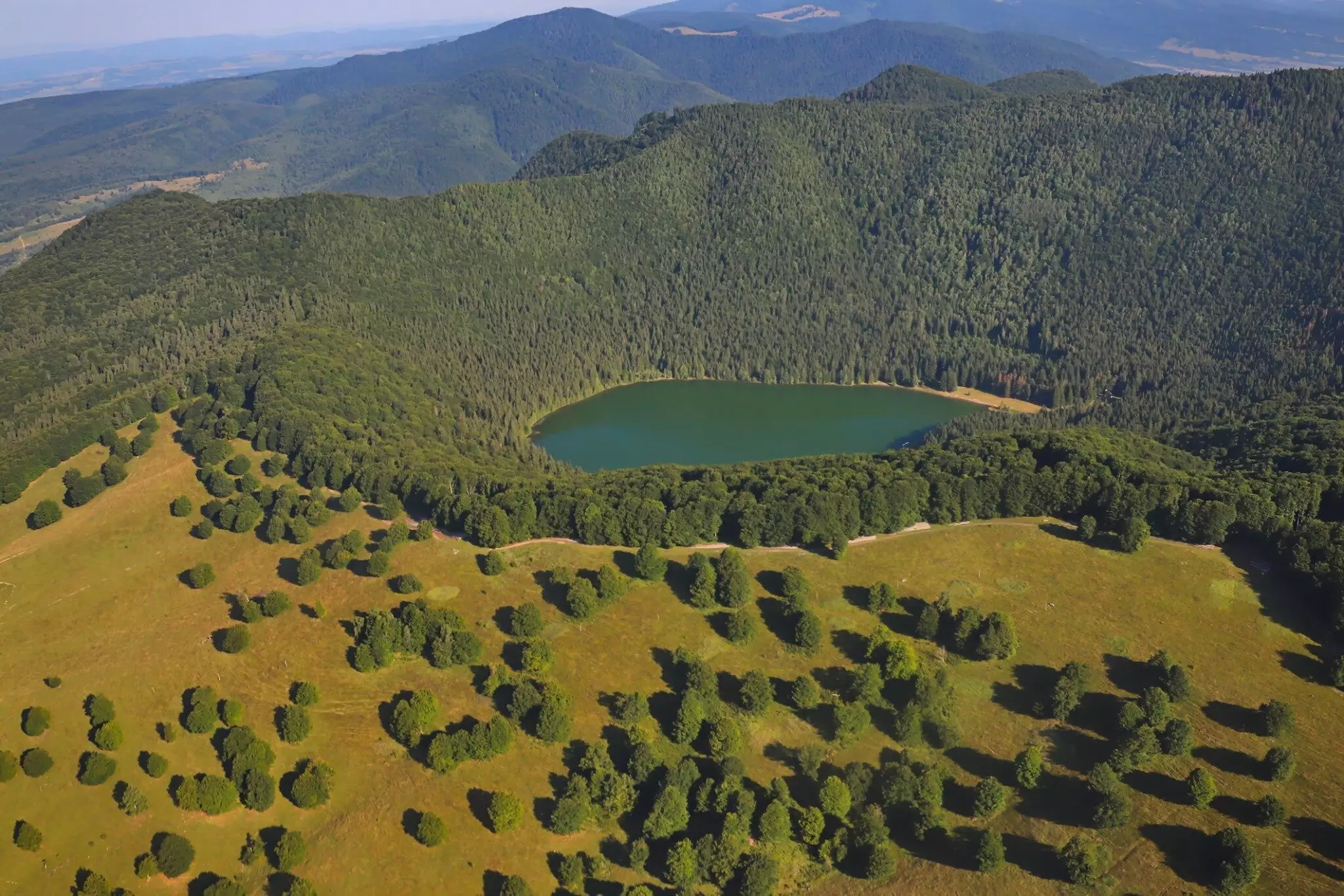Volcanic eruptions, despite their rarity, have the potential to cause widespread devastation and loss of life. One key challenge in volcanic hazard assessment is understanding the behavior of dormant volcanoes. Can a volcano erupt after tens of thousands of years of dormancy? And what factors contribute to making volcanic eruptions more dangerous? These are questions that Hungarian scientists are tackling through their research on Ciomadul, the youngest volcano in the Carpathian-Pannonian region.
Ciomadul has experienced multiple periods of dormancy throughout its almost million-year existence. Despite these long periods of quiescence, the volcano has shown the potential to erupt, even after tens of thousands of years. The most significant volcanic activity occurred within the last 160,000 years, with lava dome extrusions and subsequent eruptions. However, the recent eruption episodes were notably more dangerous and explosive compared to the previous active period, leading researchers to examine the reasons behind this change in eruption style.
Unraveling the Mysteries of Volcanic Activity
To understand the initiation and control of volcanic eruptions, scientists turned to the rocks formed during the volcanic activity. By studying the detailed mineral composition of the rocks, valuable insights into the eruption processes and magma conditions can be gained. The research team focused on amphibole, a mineral found in the Ciomadul pumices, which can provide crucial information about the magma conditions. The chemical composition of amphibole varied greatly, indicating different magma conditions at various depths. Recharge magmas, originating from greater depths, played a significant role in the explosive nature of the recent eruptions.
One of the key findings of the research is the presence of amphiboles with a chemical composition not previously reported in volcanic rocks from other volcanoes. These unique amphiboles were interpreted as an early crystallization phase in ultra-hydrous magmas. Water-rich recharge magmas, carrying distinct amphibole compositions, likely triggered the explosive eruptions. The composition of iron-titanium oxides on the crystals’ outermost rims provided additional insights into the magma conditions just prior to the eruptions. These findings highlight the complex interplay of different elements and compounds during volcanic activity.
While Ciomadul currently shows no signs of reawakening, the research emphasizes the rapid nature of reactivation in the case of recharge by hot, hydrous magma. The study of quantitative volcano petrology, like this one, contributes to the reconstruction of the subvolcanic magma reservoir structure and the assessment of magma storage conditions. Understanding these factors can enhance eruption forecasting and provide insights into pre-eruption signals. This research on a long-dormant volcano like Ciomadul highlights the importance of considering potentially active volcanoes beyond the known ones and raises awareness about the potential hazards they pose.
The research conducted by Hungarian scientists shines a light on the unpredictable nature of volcanic eruptions and the importance of investigating dormant volcanoes. Ciomadul, despite extended periods of dormancy, has displayed the potential to erupt with devastating consequences. By examining the composition of rocks and minerals, researchers have gained valuable insights into the eruption processes and magma conditions. This knowledge can contribute to better volcano hazard assessment and improved eruption forecasting. As we learn more about dormant volcanoes like Ciomadul, our understanding of volcanic activity as a whole deepens, emphasizing the need for continued research in this field.


Leave a Reply